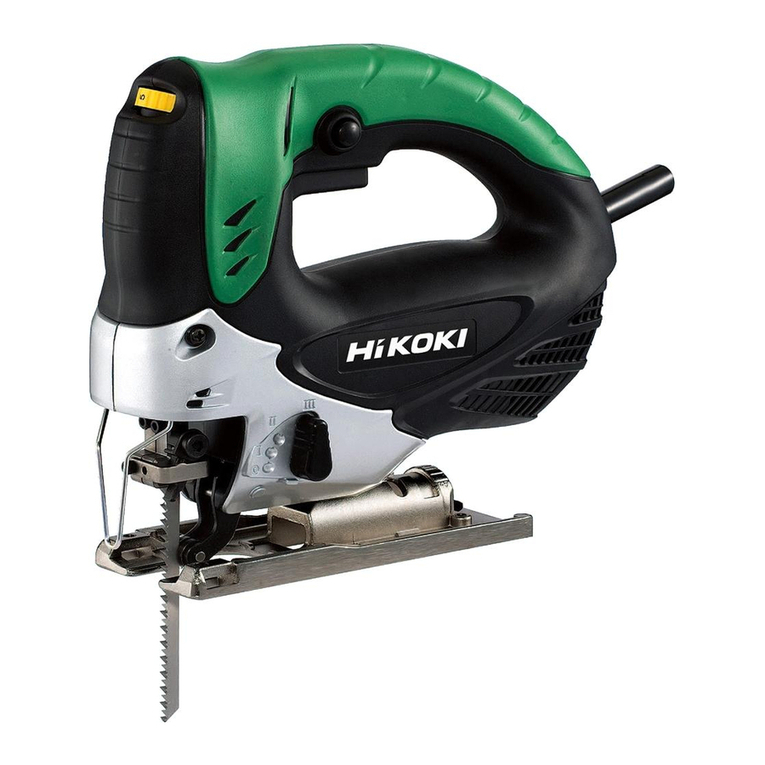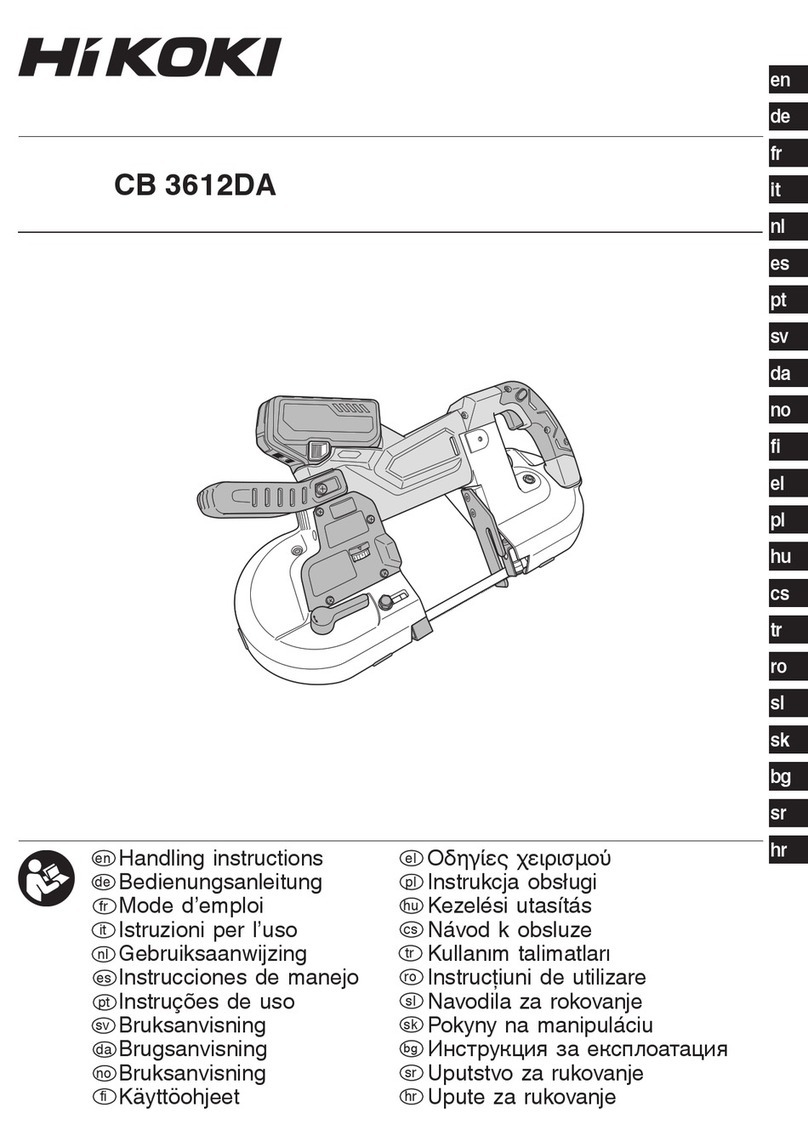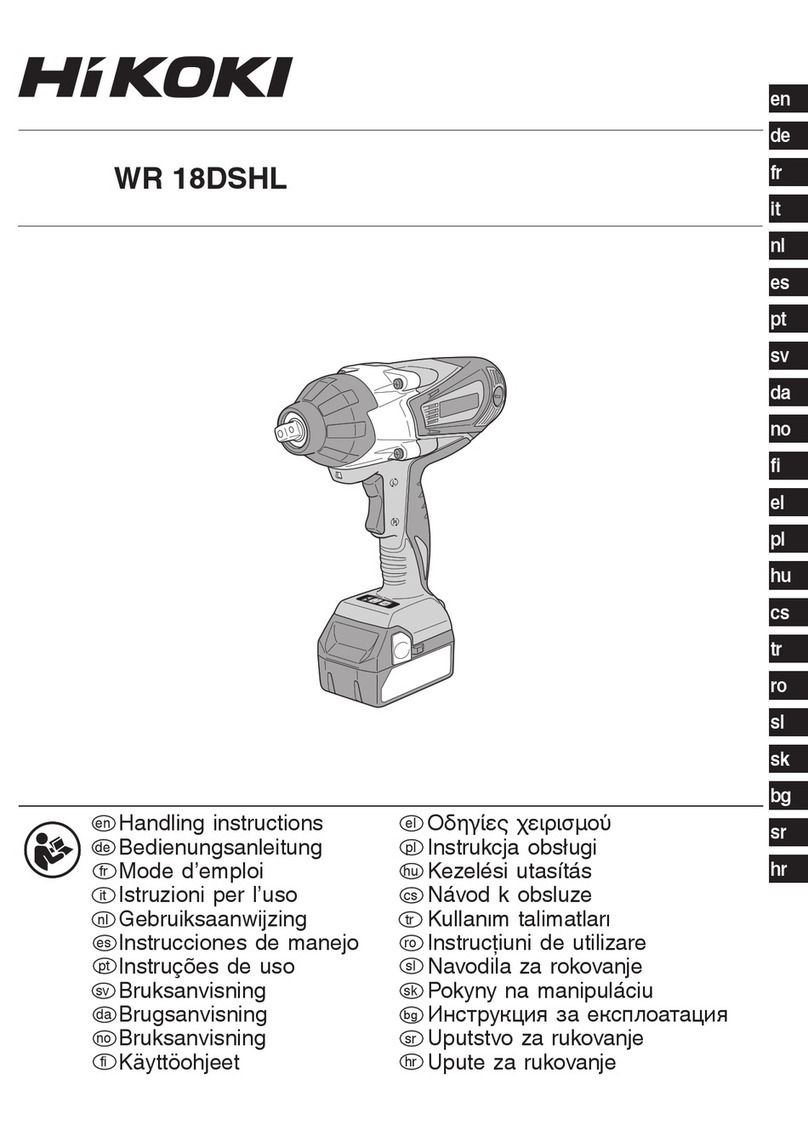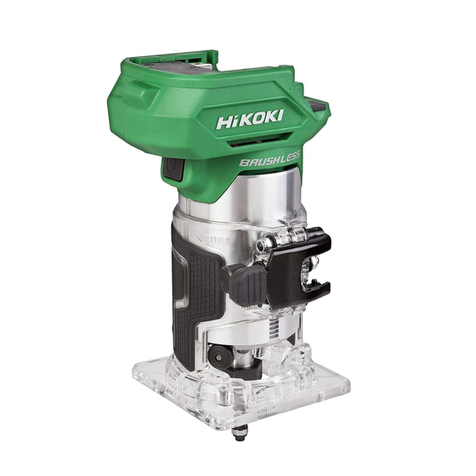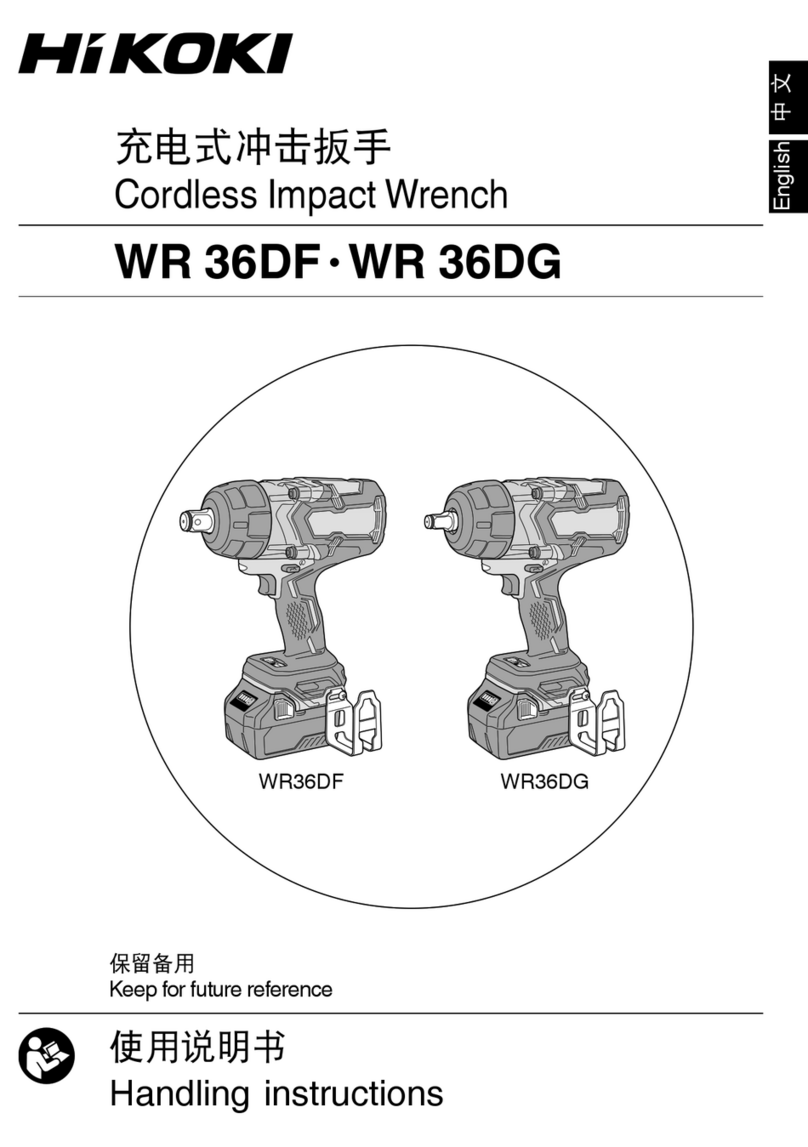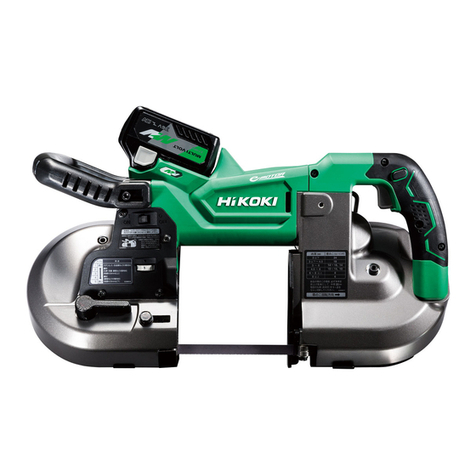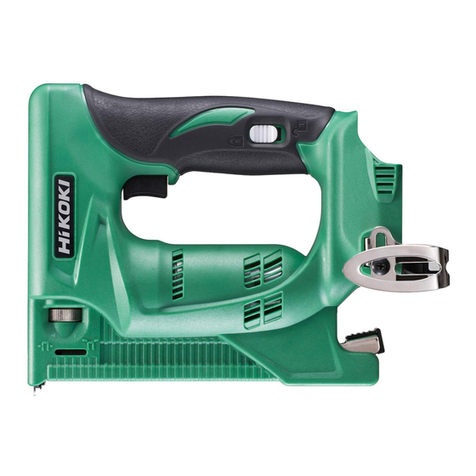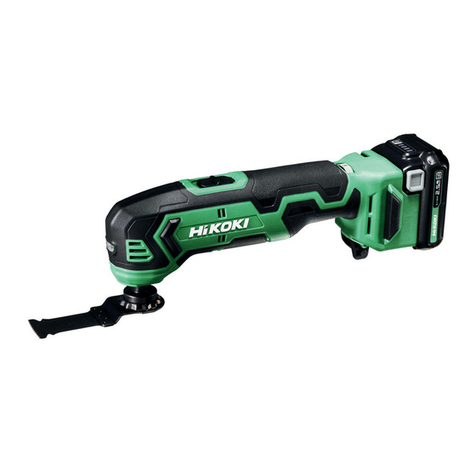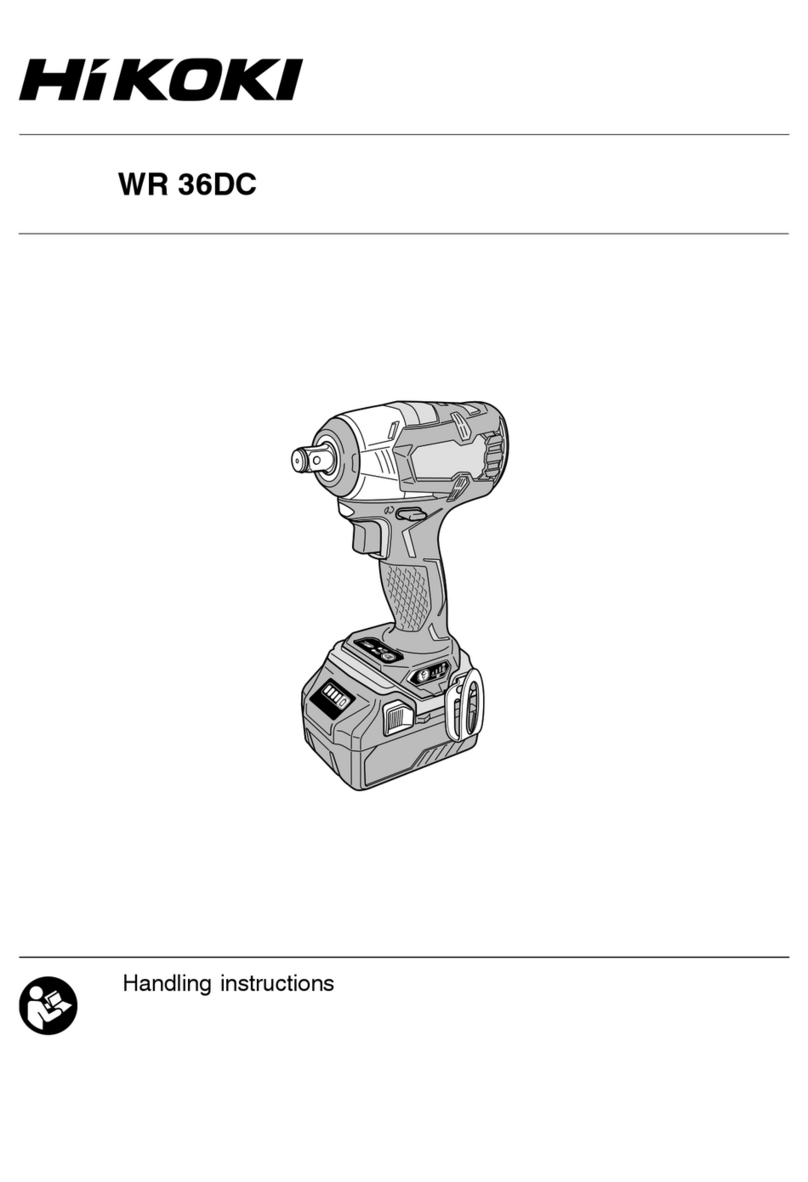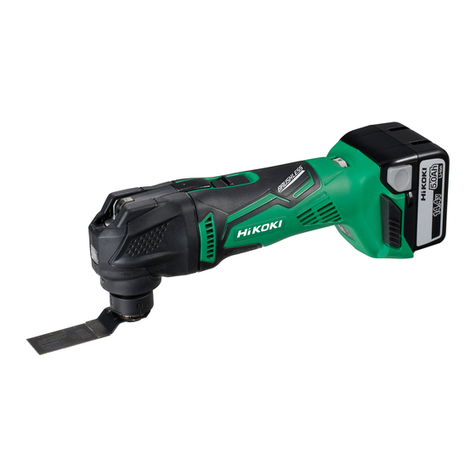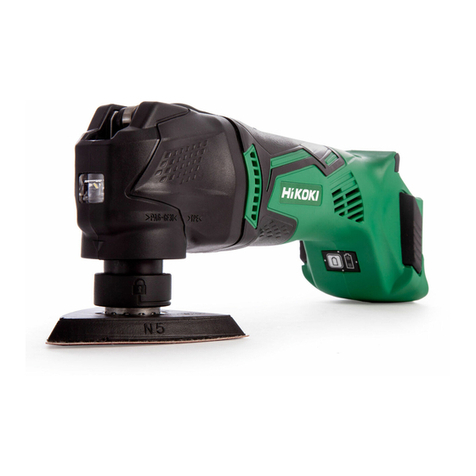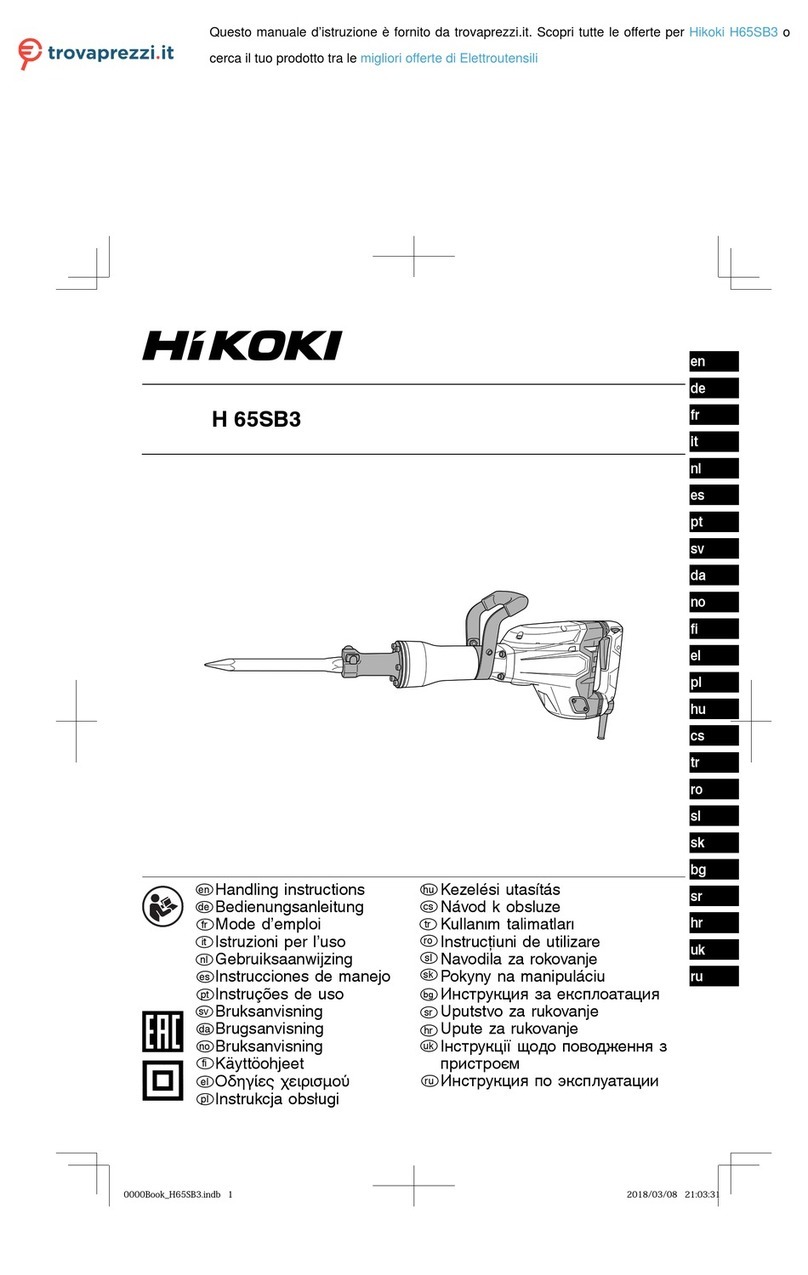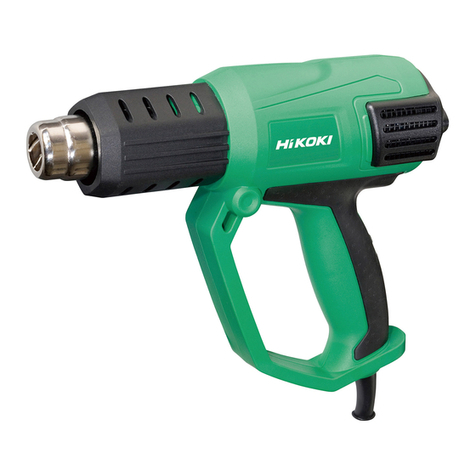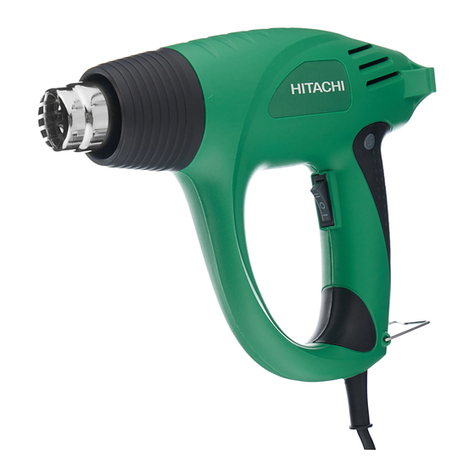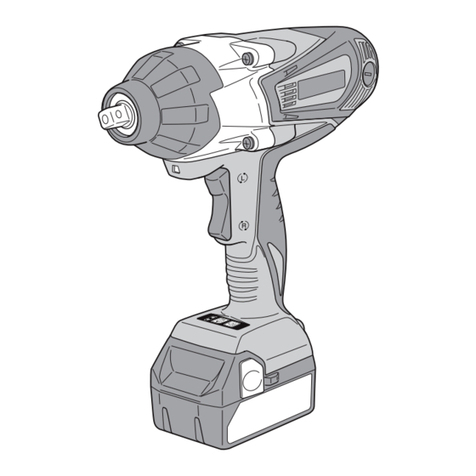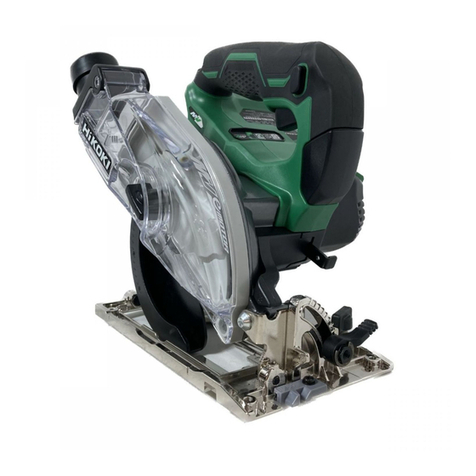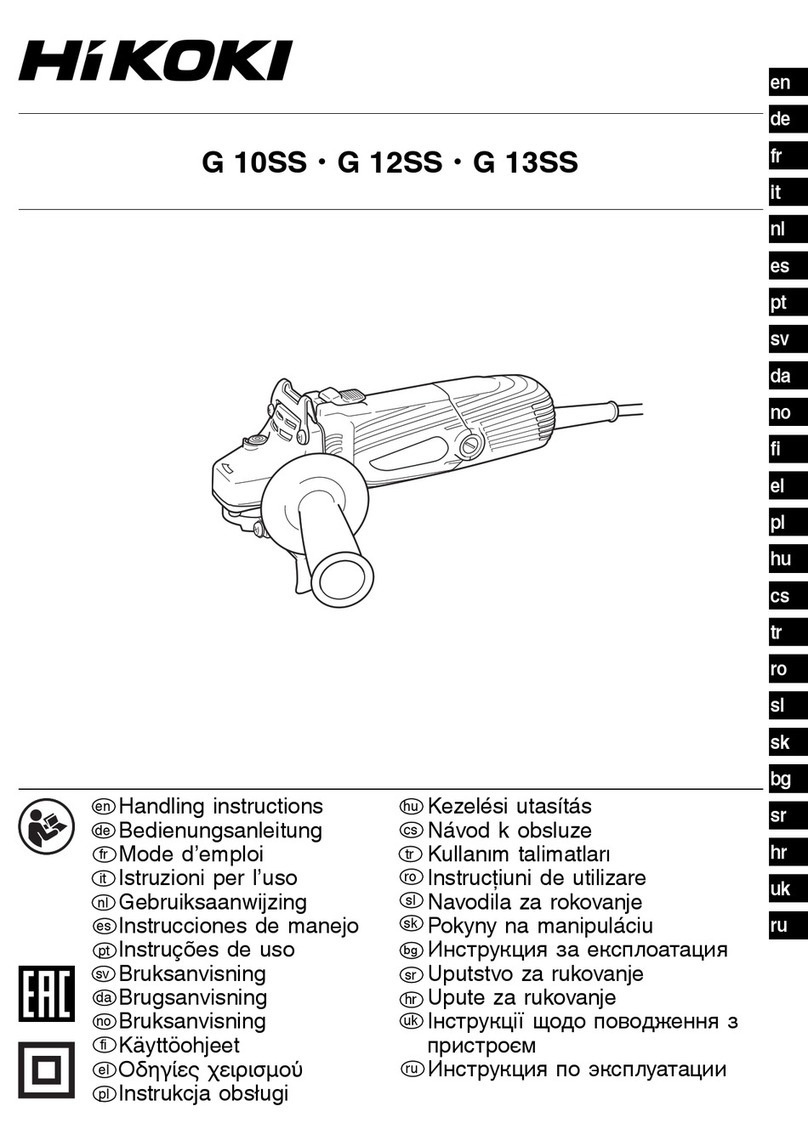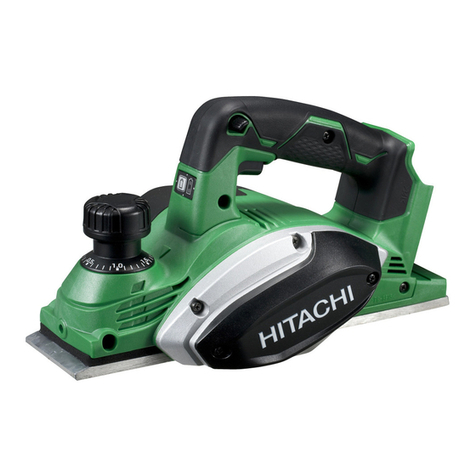
10
English
Slippery handles and grasping surfaces do not
allow for safe handling and control of the tool in
unexpected situations.
5) Battery tool use and care
a) Recharge only with the charger specified by the
manufacturer.
A charger that is suitable for one type of battery pack
may create a risk of fire when used with another
battery pack.
b) Use power tools only with specifically
designated battery packs.
Use of any other battery packs may create a risk of
injury and fire.
c) When battery pack is not in use, keep it away
from other metal objects, like paper clips, coins,
keys, nails, screws or other small metal objects,
that can make a connection from one terminal to
another.
Shorting the battery terminals together may cause
burns or a fire.
d) Under abusive conditions, liquid may be ejected
from the battery; avoid contact. If contact
accidentally occurs, flush with water. If liquid
contacts eyes, additionally seek medical help.
Liquid ejected from the battery may cause irritation or
burns.
e) Do not use a battery pack or tool that is damaged
or modified.
Damaged or modified batteries may exhibit
unpredictable behaviour resulting in fire, explosion
or risk of injury.
f) Do not expose a battery pack or tool to fire or
excessive temperature.
Exposure to fire or temperature above 130°C may
cause explosion.
g) Follow all charging instructions and do not
charge the battery pack or tool outside the
temperature range specified in the instructions.
Charging improperly or at temperatures outside
the specified range may damage the battery and
increase the risk of fire.
6) Service
a) Have your power tool serviced by a qualified
repair person using only identical replacement
parts.
This will ensure that the safety of the power tool is
maintained.
b) Never service damaged battery packs.
Service of battery packs should only be performed
by the manufacturer or authorized service providers.
PRECAUTION
Keep children and infirm persons away.
When not in use, tools should be stored out of reach of
children and infirm persons.
CORDLESS PORTABLE REBAR
CUTTER/BENDER SAFETY
WARNINGS
1. Hold the power tool by insulated gripping surfaces,
when performing an operation where the cutting
accessory may contact hidden wiring.
Cutting accessory contacting a "live" wire may make
exposed metal parts of the power tool "live" and could
give the operator an electric shock.
2. Use clamps or another practical way to secure and
support the workpiece to a stable platform.
Holding the workpiece by hand or against your body
leaves it unstable and may lead to loss of control.
3. During operation, maintenance or inspection, make
sure you and anybody in the immediate vicinity are
wearing protective goggles.
This will help prevent iron filings from getting in the eyes.
4. If you use the machine continuously, the inner cover and
gear cover can become hot. After such continuous use,
do not touch the inner cover and gear cover. (Fig. 3)
5. Avoid any work exceeding the maximum capacities of
the unit described in the specifications. Never cut and/or
bend any hard materials such as PC(Precast concrete)
steel, etc. Materials of this type are likely to scatter into
pieces and cause injuries.
6. If the unit malfunctions during operation or you hear any
abnormal noise, immediately turn offthe switch and stop
operation. Contact the store where you bought the unit
or a HiKOKI Authorised Service Center, and ask for
checkup and/or repair. Use of the unit without checkup
and repair can result in injury.
7. Make absolutely sure that the cutter cover is closed
when you don’t carry out the cutting work. If the cover
is kept open, the cutter can jam on foreign objects and
cause serious accidents. (Fig. 2)
8. While turning switches, never put your hand close to the
cutter, reaction stopper, or bending roller. Bringing your
hand close to these components can result in serious
injury.
9. If you accidentally drop the unit or knock it against
something, thoroughly examine the unit and ensure that
there are no damages, cracks, or deformations on the
cutter and unit.
10. Do not immerse unit in water as this may cause
malfunction or electric shock.
11. If a warning label can no longer be read, peels offor
becomes indistinct, exchange the label with a new
one.
Contact a HiKOKI Authorized Service Center for new
labels.
12. Install the cutter and accessories securely according
to the handling instructions. If you fail to install them
properly, they may come offand cause an injury.
13. Be sure to pull out the battery when the cutter is checked,
cleaned, and replaced. Failure to do so can result in a
serious injury.
ADDITIONAL SAFETY WARNINGS
1. Preparing and checking the work environment. Make
sure that the work site meets all the conditions laid forth
in the precautions.
2. Do not allow foreign matter to enter the hole for
connecting the rechargeable battery.
3. Never disassemble the rechargeable battery and
charger.
4. Never short-circuit the rechargeable battery.
Shortcircuiting the battery will cause a great electric
current and overheat. It results in burn or damage to the
battery.
5. Do not dispose of the battery in fire. If the battery is burnt,
it may explode.
6. Bring the battery to the shop from which it was purchased
as soon as the post-charging battery life becomes too
short for practical use. Do not dispose of the exhausted
battery.
7. Do not insert object into the air ventilation slots of the
charger. Inserting metal objects or inflammables into the
charger air ventilation slots will result in electrical shock
hazard or damaged charger.
8. When using this unit continuously, the unit may overheat,
leading to damage in the motor and switch. Therefore,
whenever the housing becomes hot, give the tool a
break for a while.
0000BookVB3616DA.indb100000BookVB3616DA.indb10 2019/11/1816:10:162019/11/1816:10:16

